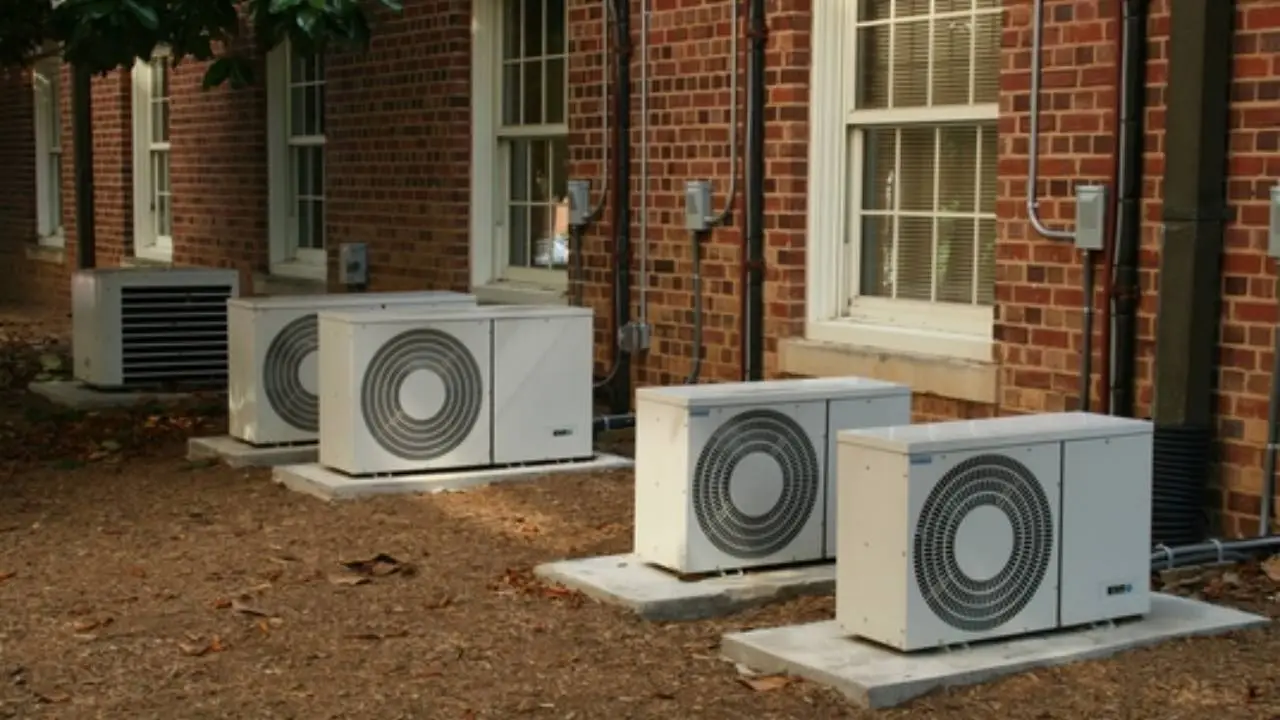
Thermodynamics how does heat pump work for heat and cold to function? Technology is the epitome of efficiency and versatility. These devices utilize the principles of thermodynamics to transfer warmth from one place to another, It provides both functionalities. Understanding the intricate workings of technology unveils their remarkable ability to harness natural energy sources. At its core, is a mechanical system designed to transfer thermal energy from a source to a higher-temperature sink.
Warmth pumps move heat, unlike conventional heating and cooling systems that produce hot or cold air. This process resembles how a refrigerator releases temperature from its interior to the outside world. The process begins with the evaporator coil, where a refrigerant absorbs warmth from the source, be it air, water, or soil. This low-pressure, low-temperature refrigerant vaporizes as it absorbs the temperature
The compressor then increases the pressure of the vaporized refrigerant turning it into a high-pressure, high-gas. During the summer, they can operate in reverse to provide cooling. It cools the interior area by removing heat from the air inside and releasing it outdoors. Key components include the compressor, condenser, evaporator, and expansion valve.
How Does Heat Pump Work and What Types of These?
it is a device that transfers heating from one place to another, typically from a colder area to a warmer one, using mechanical energy. A fluid evaporates at a low temperature, absorbing the hotness from its surroundings in the process. The vaporized refrigerant is then compressed, which increases its temperature and pressure.
Air-Source
It extracts warmness from the outdoor air during the season and releases it indoors. During the cooling season, the process is reversed, with warmth removed from indoors and expelled outdoors. They are highly efficient in moderate climates but may struggle in extreme cold conditions.
Ground-Source
It uses the ground’s or groundwater’s generally constant temperature as a warmth sink in the cooling season. They are highly efficient but require more extensive installation. However, they are more expensive to install due to the need for ground loops.
Water-Source
It extracts warmness from water sources such as rivers, lakes, or ponds. It provides heating and cooling for buildings located near water bodies. They are highly efficient but may not be feasible in locations due to the availability of a suitable water source.
Hybrid Warming Systems
It combines the functionality of traditional systems, such as furnace boilers, with technology, offering increased efficiency and versatility. They automatically switch between the auxiliary heating system based on outdoor temperatures and energy costs.
The Basic of Components how does Heat Pump work
The evaporator serves as the warmth absorption point. A cooling absorbs hotness from the surrounding environment, typically air, water, or the ground. The compressor plays a crucial role in the warming system cycle by pressurizing the refrigerant gas and increasing its energy level. In the condenser, the high-pressure, high-degree cooler releases warmness as it condenses into a liquid state. This is then transferred to the desired space for purposes.

The expansion valve controls the coolant flow into the evaporator, which in turn manages the overall system operation. In heating devices, this cycle facilitates effective heat transfer from one place to another. The refrigerant, typically in a gaseous state, is compressed by the compressor, increasing its pressure and temperature. The high-pressure,-refrigerant gas flows into the condenser. it releases warmness to the surrounding environment and condenses into a liquid state.
The liquid coolant passes through the expansion valve. Its pressure and temperature are reduced, allowing it to enter the evaporator. Inside, it absorbs warmth from the surrounding air or subsurface water as a low-pressure, low-temperature liquid refrigerant. It comes in various types, each tailored to specific applications and environmental conditions.
Challenges and Future Trends
Enhancing the efficiency of warmness pumps remains a significant challenge. Innovations in materials and compressor technologies are vital for improving efficiency and reducing energy consumption. suffer in colder areas historically because of the decreased outside temperatures. Research into advanced defrosting methods and refrigerants with better low-temperature performance is essential. It reduce carbon emissions as the world electrifies, they are crucial for offering renewable heating solutions.
Future trends involve integrating warmness systems with renewable energy sources like solar and wind power. The future lies in smart controls and integration with smart grids. This enables better demand-response management and optimization of power consumption. Increasing adoption of it in both residential and commercial sectors is a future trend. Governments may offer incentives and subsidies to promote their installation, driving market growth. Addressing the environmental impact of refrigerants used in it is critical.
Moving toward environmentally friendly coolants with decreased potential for global warming is one of the future trends. Ongoing research and development initiatives are meant to tackle these issues and improve technology’s scalability, affordability, and efficiency. It is the utilization of cutting-edge parts and materials as well as the integration of renewable power sources. The deployment of smart grid technologies is one of the upcoming trends in innovation. Innovations in smart technology and connectivity are also shaping the future of warmness pumps.
Conclusion
For modern buildings, heat pumps offer a flexible and environmentally friendly way to meet their heating and cooling requirements. It reduces their negative effects on the environment and utilizes renewable fuel sources. It is essential to the shift towards a more sustainable and greener future. The position is to become more and more important as technology advances. It helps to fulfill the world’s rising demand for heating and cooling solutions while lowering energy usage and carbon emissions.
